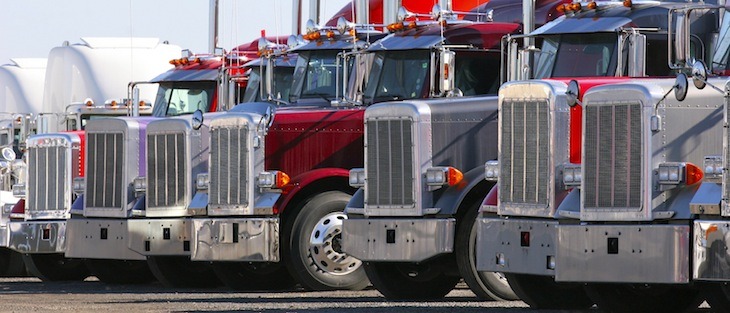Used truck prices not likely to rise, tied to trucking tonnage and load volume
by June 21, 2017 2:08 pm 469 views

Prices of used semitrailer tractors aren’t expected to rise over the next two years, said Steve Clough, president of Arrow Truck Sales, a prediction suggesting flat to slow growth in the trucking industry.
Clough spoke on the used truck market in a conference call Tuesday (June 20) hosted by transportation analyst Michael Baudendistel of Stifel.
If the amount of freight and the number of loads the trucking industry hauls are flat, expect used truck prices to decline, Clough said. But prices should remain firm if tonnage and load volume rises.
The American Trucking Associations’ Truck Tonnage Index has reported some sharp increases and declines over the past year but continues to see a rise in year-over-year comparisons. So far in 2017, the index is up 0.9% from the same period in 2016. In May, the index rose 4.8% to 144.1, from the same month in 2016.
Buyers are more likely to purchase more used trucks when there’s more freight to haul, Clough said. Also, when revenue for used truck buyers is more predictable, it makes them more comfortable to spend.
And pricing for trucking is starting to show signs of stability, according to analyst Donald Broughton of Broughton Capital, who provides analysis for Cass. In May, the Cass Truckload Linehaul index rose 1.1% in the same month in 2016. The index measures fluctuations in per-mile truckload linehaul rates. April was the first month in 13 months the index rose. Broughton expects pricing to decline 1% or rise as much as 2% “as the current strength being reported in spot rates leads him to believe contract pricing rates should move back into positive territory by the end of the year.”
According to DAT Trendlines, spot rates have been rising since February. In May, dry-van spot rates rose 9.7%, from the same month in 2016.
Clough follows contract rates and spot pricing, but spot pricing reflects the majority of his customers, mostly owner-operators. He said trucking companies need to not only have enough loads but also the level of rates in which to be profitable. Business slowed in 2015 as rates fell. But over the past year, rates have been “evening out.”
A trend that used to be closely tied to the tonnage is the amount of trucks needed to haul the freight. It’s not risen as much as the tonnage index, and this shows that trucking companies are more efficient with the trucks they have, Clough said.
The U.S. retail supply of used semitrailer tractors is expected to decline 8% to 177,000 units in 2017, from 193,000 in 2016, Clough said. The supply should continue to decline after reaching a peak of 249,000 units in 2015. Annually, 185,000 semitrailer tractors are needed to replace existing ones.
Sales of older trucks with technology such as diesel particulate filters (DPF) have fallen as the supply of those trucks has been declining. While older trucks might have higher repair costs, the costs have scared used truck buyers and have led some from the business, he said. Part of the issue is diagnosing the problems.
While used truck buyers are typically slow to adjust to change, Clough said the buyers are starting to accept automatic transmissions.
“For the trucking business, that’s a real positive,” he said. It’s easier to break in new drivers on an automatic transmission, than a manual transmission.
